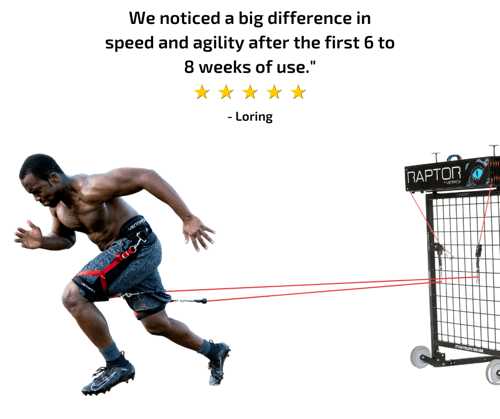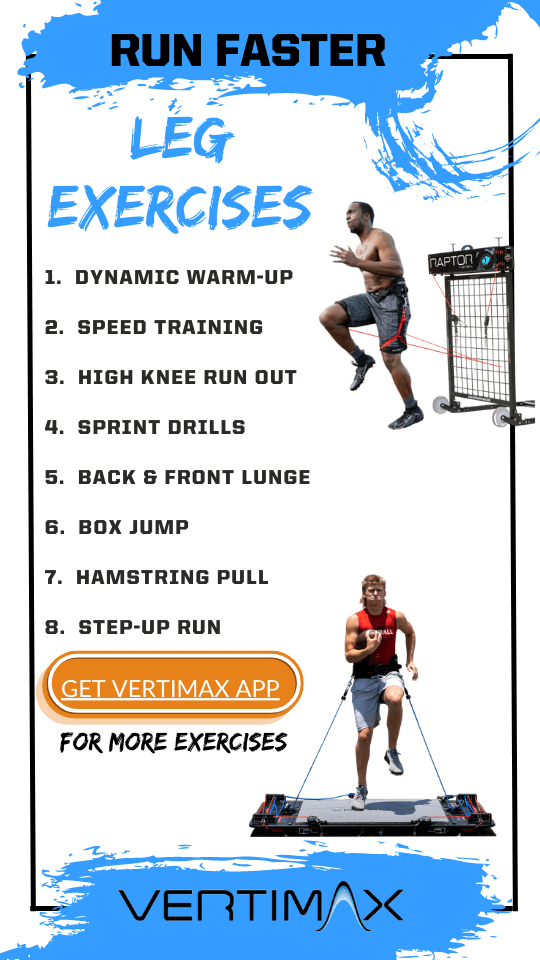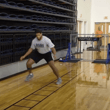Running a faster mile is a popular fitness goal for many athletes and fitness enthusiasts. Whether you're an experienced runner or just starting your journey, improving your mile time can be a rewarding and challenging endeavor.
Are you looking to shave time off your mile? You are not alone. For both amateurs and professionals alike, running a faster mile can prove to be a fickle beast. The trick is to train smarter, not harder. If you divide your sessions between strength training, track intervals, and long runs, you’ll be running a faster mile in no time!
In this blog post, we'll provide you with a comprehensive guide to running a faster mile, sharing essential tips and strategies used by professional runners. Let's lace up our shoes and dive in!
Guide To Running A Faster Mile
1. Invest in a Pair of Lightweight Running Shoes
While this may seem like a given for any athlete, you'd be surprised how many runners are running in the wrong shoes. Many runners are heel strikers with short strides. To run a faster mile, we need to get off our heels and onto our toes.
Benefits: Lighter-weight shoes create better running form and eventually help you to develop a powerful push-off as you run. Additionally, the right running shoes will keep your feet in the right position for your run, which will help to prevent potential injury.
2. Set Clear and Realistic Goals
Setting clear and realistic goals is the first step to improving your mile time. Define a specific time you want to achieve and make sure it aligns with your current fitness level. By having a goal in mind, you'll stay motivated and focused throughout your training.
Benefits: Goal-setting provides direction, boosts motivation, and helps you measure your progress accurately.
3. Develop a Structured Training Plan
Create a well-structured training plan that includes a combination of speed work, endurance training, and recovery days. Gradually increase your mileage and incorporate interval training to improve your speed and cardiovascular fitness.
Benefits: A structured training plan ensures consistency, minimizes the risk of injury, and optimizes your performance gains.
4. Prioritize Interval Training
Speed interval training involves alternating between high-intensity bursts of speed and periods of active recovery. Incorporating speed intervals into your training can significantly improve your running economy and help you run faster miles.
Try increasing speed with interval training using VertiMax V8 platform with the resistance bands loaded at the waist, and each quad, start in a standing position, about 10 meters in front of the platform. Then, explode forward and hit top speed within about 15 meters before decelerating gradually to a stop.
Benefits: Interval training enhances your anaerobic capacity, improves your running efficiency, and boosts your overall speed.
5. Incorporate Tempo Runs
Tempo runs are sustained efforts at a comfortably hard pace, slightly slower than your race pace. By including regular tempo runs in your training, you can improve your lactate threshold, increase your aerobic capacity, and enhance your overall race performance.
Beneftis: Tempo runs train your body to sustain a faster pace for a longer duration, resulting in improved speed and endurance.
6. Focus on Strength and Conditioning
Building strength and improving your overall conditioning are essential for running faster miles. Incorporate strength training exercises such as squats, lunges, planks, and core exercises into your routine. Additionally, don't forget to work on your flexibility and mobility through stretching and mobility exercises.
Benefits: Improved strength and conditioning lead to better running form, reduced risk of injury, and increased power and efficiency.
-
Building Leg Strength
No amount of running can produce the leg power you need to run a faster mile. Without leg power, you’ll find that you don't have the strength to pick up your legs during the last quarter of your race. To run a faster mile, you need to be able to improve the muscles that run from your toe to your hip.
Running hills presents one of the best ways to trick yourself into using a better running form. Additionally, running hills helps to strengthen your glutes, quads, hamstrings, and calves. According to a recent New York Magazine interview with Olympic Medalist, Nick Willis, "running uphill forces you to lift your knees high, create a powerful stride, and stay on your toes for a good foot plant." Additionally, hills provide resistance training without the impact on your joints that can result from running on the road. If you don't have a hill, you can build explosive leg power using any of the following exercise drills:
- Paused Squat Jump (V8 EX) - Stand on your platform, loaded at the waist. Assume a parallel squat position. Place your hands on the back of your head, and your elbows out. With one sudden exertion, jump up. Upon landing, try to pause and remain still for one second. Repeat the jump again for 10 -12 reps.
- VertiMax Box Jump (V8): Great for your quads, glutes, and hamstring muscles, start by stepping into a VertiMax with a medium to heavy resistance (depending on your ability). Keeping your knees over your toes, jump as high and as fast as you can and land safely. Repeat for 10 - 20 seconds.
- Lunge Backside Frontside (Raptor): Anchor your VertiMax Raptor (i.e. on a fence) and set the resistance at your waist. Step about 10 meters in front of the Raptor. Proceed into a lunge, knee lift, step back down, and then back to reset. Be sure to keep your foot low while you pull through. This is an ideal drill to strengthen your core and leg muscles - both of which are vital to enhancing your running speeds.
- Develop a Strong Core
The shorter the race, the more essential your core strength. You need a solid foundation from ankle to head from the moment your foot pushes off the ground with explosive power. Often, when a runner’s core is weak, they will get tired in the second half of a mile race, losing steam and momentum. A strong base allows a runner to use their legs to prevent their body from twisting around.
- High Knee Run Out (Raptor) - Attach one end of a resistance band to a solid anchor (such as a fence at the track) and the other end around your waist. Start in a standing position, about 10 meters in front of the VertiMax Raptor. Begin high knees, alternating between legs, for 25 seconds. Rest and repeat. High-knee exercises target and tone your core, quads, glutes and calves. Because of the one-legged stance during the movement, this exercise also serves to help improve your balance.
- Lunge to Knee Drive - Standing in front of the VertiMax platform, with resistance loaded at your thighs, begin a knee drive, landing in the rear lunge position for 6-15 reps, then alternate legs. Not only will this drill help to strengthen your core and improve your balance, it’s also designed to teach athletes to achieve proper hip level knee height necessary for sprint mechanics.
7. Implement Cross-Training
Engaging in cross-training activities such as cycling, swimming, or strength training can complement your running routine. Cross-training provides active recovery, reduces the risk of overuse injuries, and improves overall fitness.
Benefits: Cross-training promotes muscle balance, prevents burnout, and helps maintain your motivation by adding variety to your workouts.
8. Rest and Recovery
Rest and recovery are crucial components of any training program. Allow your body enough time to recover between intense workouts to avoid over-training and reduce the risk of injury. Prioritize quality sleep, proper nutrition, and relaxation techniques.
Benefits: Sufficient rest and recovery optimize your body's adaptation to training, reduce fatigue, and improve overall performance.

Running A Faster Mile With VertiMax
VertiMax allows dynamic training by simultaneously loading multiple points on your body. This delivers superior strength and conditioning benefits for athletics, everyday life activities, and rehabilitation purposes. By comparison, traditional exercise machines restrict movements to a single plane of motion, which is an unnatural movement for the body and may potentially lead to faulty movement patterns or injury.
With VertiMax, you can train smarter to strengthen the muscles needed for explosive power to run a faster mile. Running a faster mile requires a combination of dedicated training, proper technique, and a smart approach to overall fitness.
By following this pro's guide, you'll be well-equipped to enhance your speed, endurance, and overall running performance. Remember, consistency, patience, and a positive mindset are key to achieving your mile time goals. So lace up your shoes, hit the track, and watch yourself conquer new milestones in your running journey!
Check out more leg exercises to run faster in How to Develop Leg Muscles To Run Faster.























